Porsche Boxster Spyder
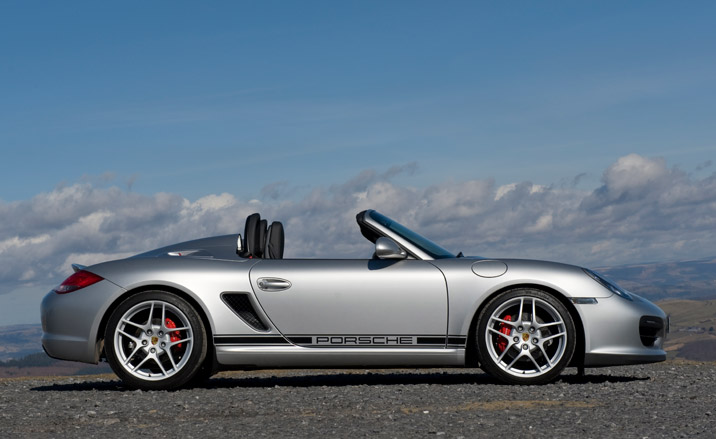
The 'less is more equation' is going through a long stretch of unpopularity. Glance around any car park and it's the opposite that rings true; automotive waistlines have expanded to hitherto unknown proportions. Ultimately, ever stringent regulations will force the excesses to be shed so that lightness triumphs, but right now we're still in the last days of lardiness.
The new Porsche Boxster Spyder is intended to emphatically buck this trend. A lightened and more powerful version of the acclaimed Boxster S, the Spyder harks back to the spirit and style of the earliest Porsche models, especially the iconic 550 Spyder of the early 50s, a racing special for the road that the Stuttgart-based company is keen to show alongside its latest car.
The Boxster Spyder is pitched at the enthusiast. Its key characteristic is minimalism, most notably in the removal of the electrically-operated canvas roof that comes as standard on the Boxster. In its place is a broad aluminium rear deck, its styling hinting at the great racing Porsches of the past, as well as the Carrera GT supercar of 2004.
Flip the deck open, and nestled above the mid-mounted six-cylinder engine is a complex arrangement of canvas and struts that has to be manoeuvred into place by hand to provide the weatherproofing - Porsche calls it a 'weather protection system,' rather than a hood. For those accustomed to flipping a switch - without even having to stop - the Spyder's system will seem rudimentary. However, Porsche has no fear of alienating anyone, believing that this 'purist, minimalist sports car' will be a track day special for its more dedicated customers, rather than a daily driver.
The Spyder's performance is best described as fizzing. On the track, the car dives into corners with precision, the beautifully weighted steering and low centre of gravity giving you supreme confidence that you'll exit neatly and at the right velocity. A few spins of the test track at Porsche's Experience Centre in Silverstone - a privilege proffered to all new customers - more than convinces one of the Spyder's surefootedness.
On skidpan and kick plate the electronics systems grind and judder as they cut in to prevent gravity and physics doing their worst; such predictable behaviour in extreme conditions bodes well for the car's road manners.
At 1,275 kg, the Spyder is Porsche's lightest model (twice the weight of the original 550 Spyder, yet half the weight of the current Cayenne Turbo). Admittedly, aside from the roof, many of these savings have been achieved by stripping out helpful things like the audio system and satnav, options that many drivers will pay to add straight back in, especially given the latter's efficiency and ease of use.
Receive our daily digest of inspiration, escapism and design stories from around the world direct to your inbox.
But there are other distinctive touches, like the red webbing door pulls, the 70s-style side graphics and an absence of fripperies like cupholders and chrome trim. The Spyder feels even more wieldy than its Boxster and Cayman siblings. Paired with Porsche's ultra-swift PDK gearbox, the car is a modern classic, a rare combination of function and entertainment that should, like its forebears, continue to give pleasure for generations to come.

A lightened and more powerful version of the acclaimed Boxster S, the Spyder harks back to the spirit and style of the earliest Porsches.

The Boxster Spyder's key characteristic is minimalism, most notably in the removal of the electrically-operated canvas roof that comes as standard on the Boxster.
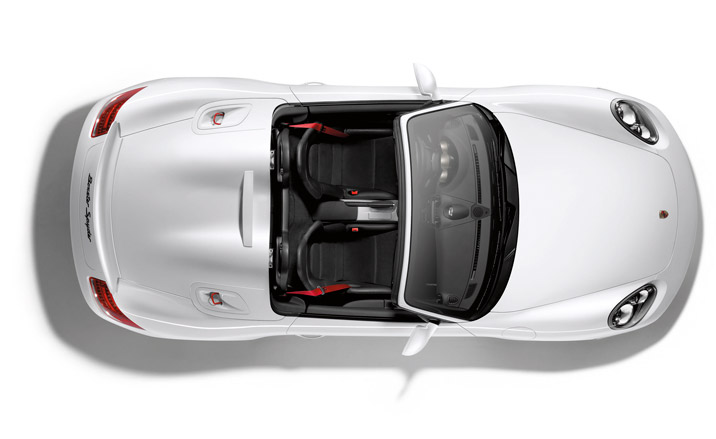
At 1,275 kg, the Spyder is Porsche's lightest model.

The weight has been reduced by stripping out things like the audio system and satnav.
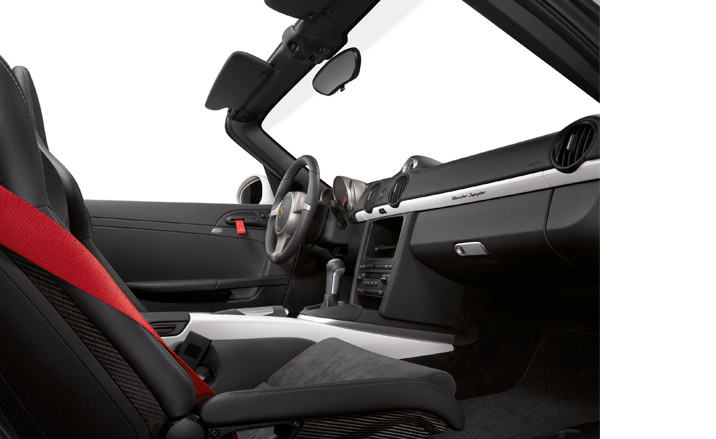
The red webbing door pulls are an attractive extra feature...
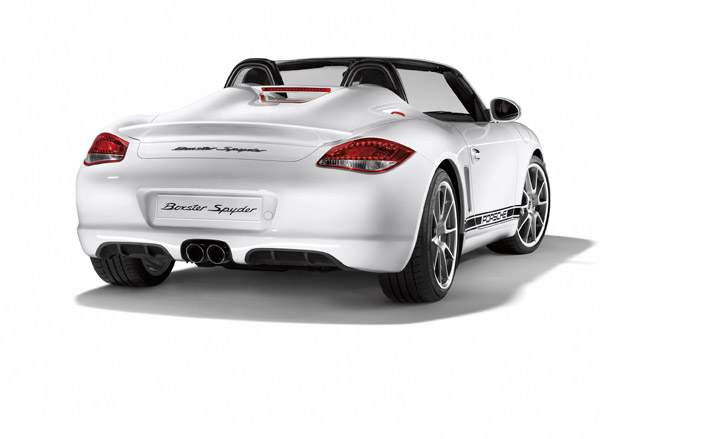
...as are the 70s-style side graphics and an absence of fripperies like cupholders and chrome trim.
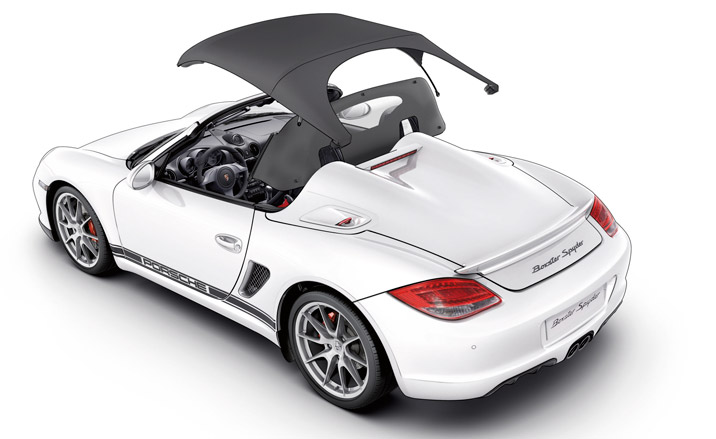
The Spyder feels even more wieldy than its Boxster and Cayman siblings.
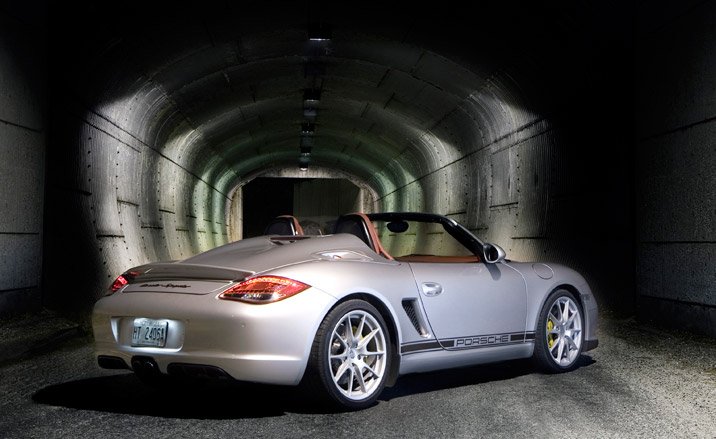
The Spyder is a modern classic, achieving a rare combination of function and entertainment.
Jonathan Bell has written for Wallpaper* magazine since 1999, covering everything from architecture and transport design to books, tech and graphic design. He is now the magazine’s Transport and Technology Editor. Jonathan has written and edited 15 books, including Concept Car Design, 21st Century House, and The New Modern House. He is also the host of Wallpaper’s first podcast.
-
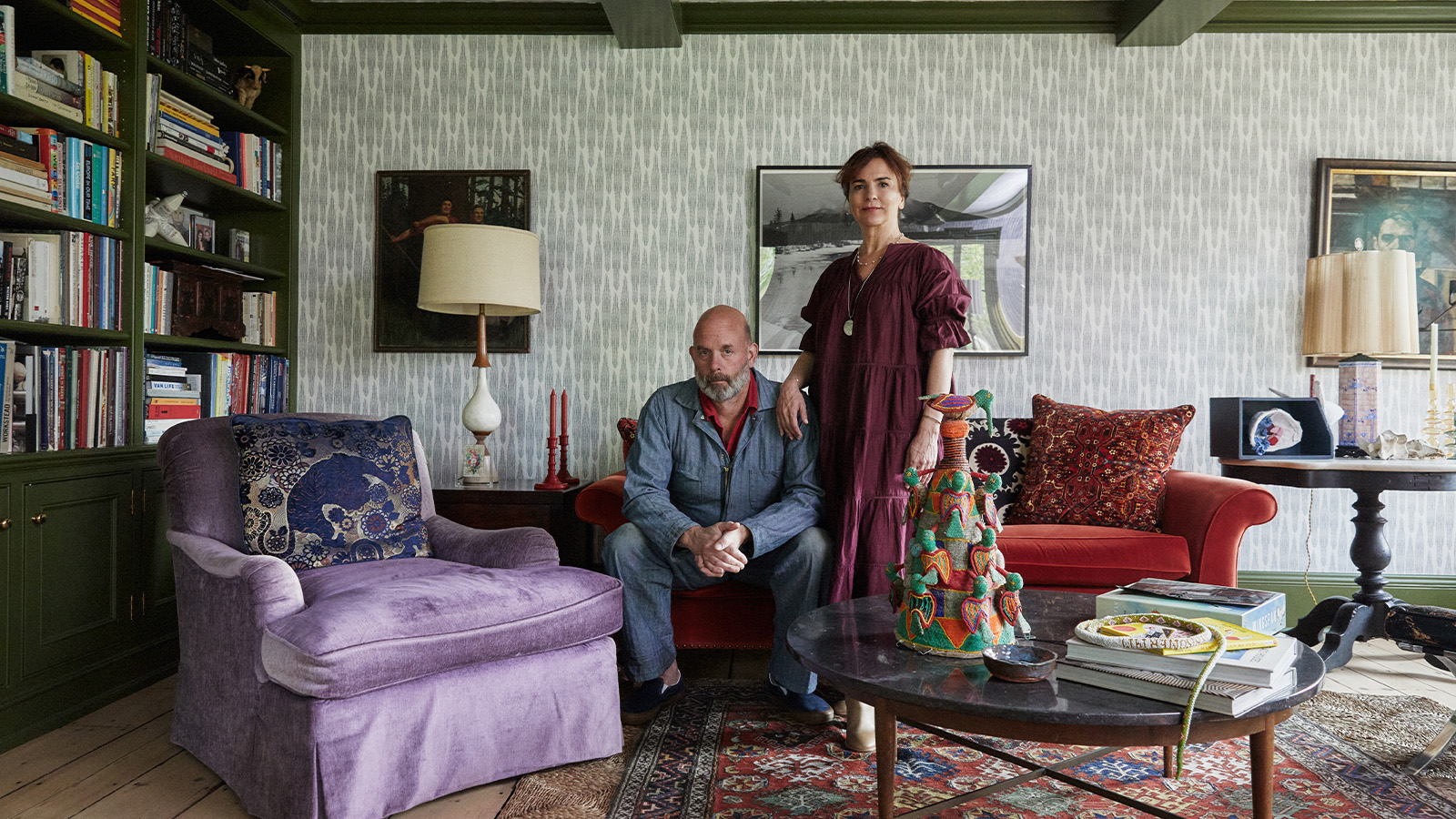 How We Host: Interior designer Heide Hendricks shows us how to throw the ultimate farmhouse fête
How We Host: Interior designer Heide Hendricks shows us how to throw the ultimate farmhouse fêteThe designer, one half of the American design firm Hendricks Churchill, delves into the art of entertaining – from pasta to playlists
-
 Arbour House is a north London home that lies low but punches high
Arbour House is a north London home that lies low but punches highArbour House by Andrei Saltykov is a low-lying Crouch End home with a striking roof structure that sets it apart
-
 25 of the best beauty launches of 2025, from transformative skincare to offbeat scents
25 of the best beauty launches of 2025, from transformative skincare to offbeat scentsWallpaper* beauty editor Mary Cleary selects her beauty highlights of the year, spanning skincare, fragrance, hair and body care, make-up and wellness
-
 New Porsche Cayenne Electric makes a case for a sporting life with lashings of technology
New Porsche Cayenne Electric makes a case for a sporting life with lashings of technologyThe next-gen Cayenne gets its first all-electric model, a mighty SUV that’s also the first Porsche with wireless charging
-
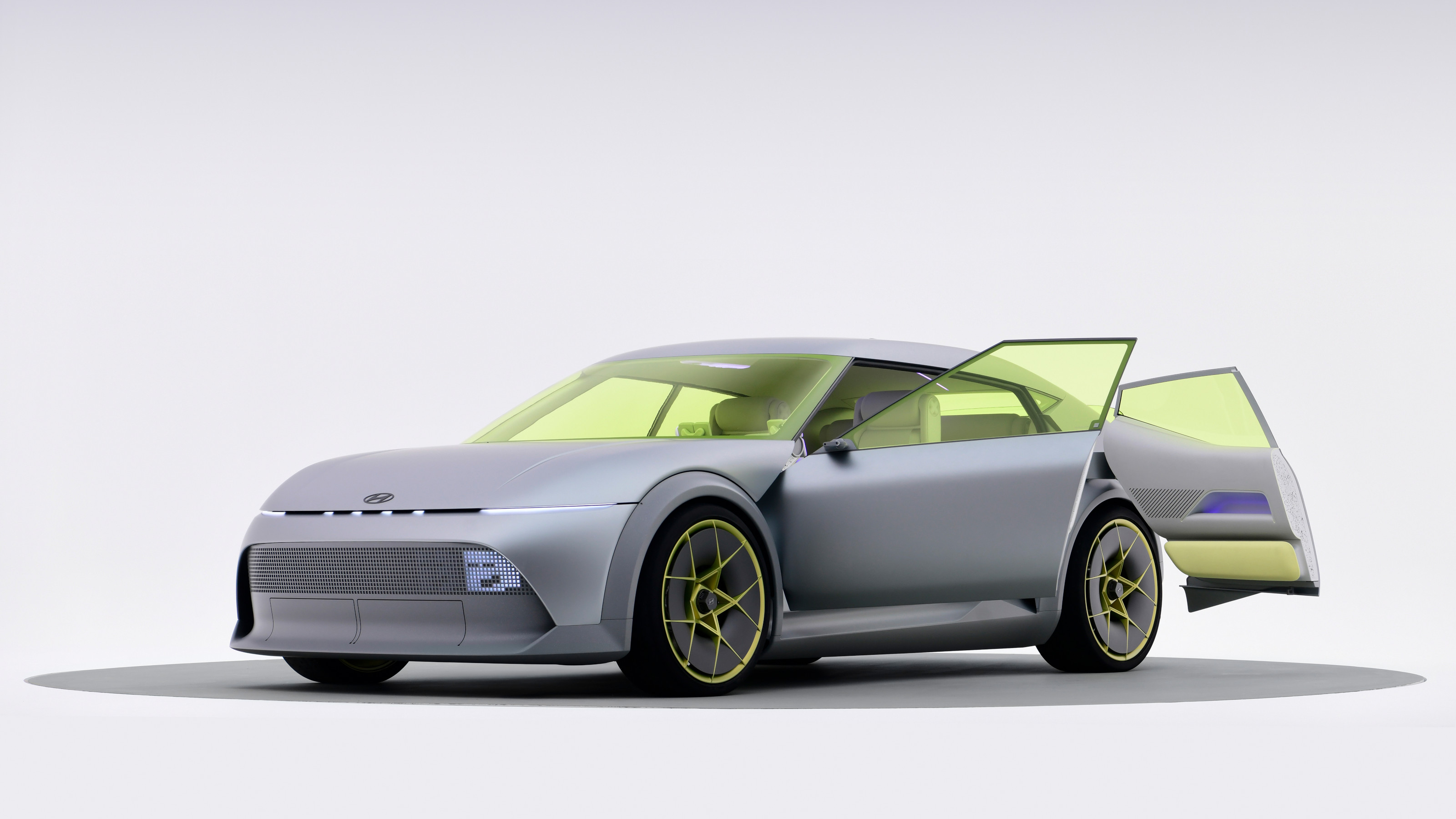 All the new electric cars and concepts revealed at Munich’s IAA Mobility 2025
All the new electric cars and concepts revealed at Munich’s IAA Mobility 2025Munich’s alternative motorshow is now in its third iteration, combining a traditional exhibition space with a conference and large-scale public activations on the streets of the city
-
 KAMManufaktur transforms the 1960s-era Porsche 912 into a refined restomod GT
KAMManufaktur transforms the 1960s-era Porsche 912 into a refined restomod GTThe KAMM 912T is a restomod Porsche for the more discerning collector, a rebuilt and re-engineered car that favours analogue feel and simplicity over all-out power
-
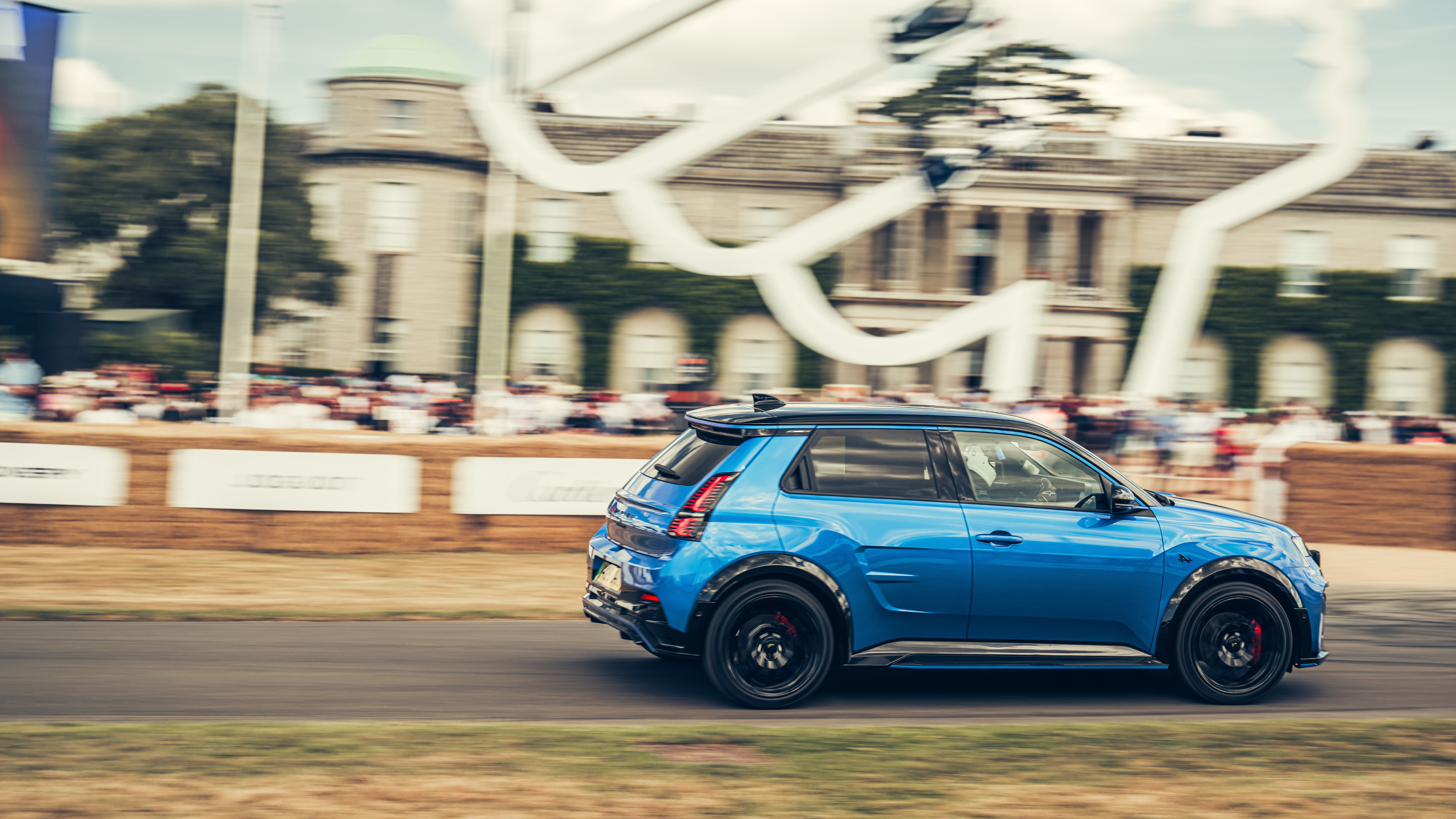 All the best bits from Goodwood Festival of Speed 2025
All the best bits from Goodwood Festival of Speed 2025As car makers switch their allegiance to the sunny West Sussex countryside as a place to showcase their wares, a new generation of sports cars were sent running up that famous hill
-
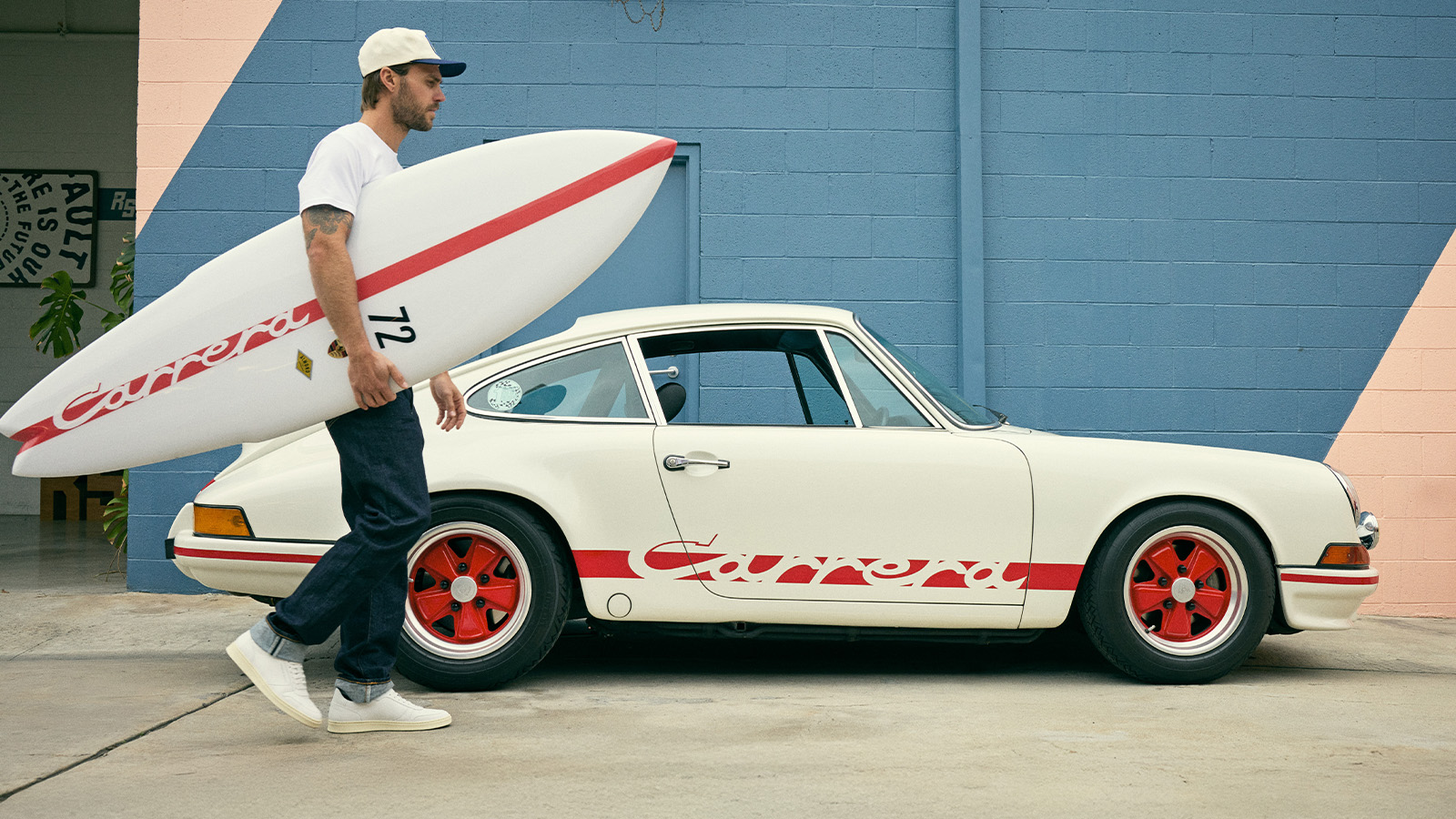 This Porsche surfboard collaboration captures the spirit of 1970s Southern California
This Porsche surfboard collaboration captures the spirit of 1970s Southern CaliforniaThe Porsche 911 Carrera RS 2.7 is the inspiration for the company’s second collaboration with California’s Almond Surfboards, featuring a custom-made board and limited-edition apparel and accessories
-
 ‘Wundercar’ celebrates the ineffable aura of the Porsche 959, the first true hypercar
‘Wundercar’ celebrates the ineffable aura of the Porsche 959, the first true hypercarCurated by London creatives INK, ‘Wundercar’ is a London exhibition dedicated to the image and influence of Porsche’s seminal 959, a true icon of 1980s engineering
-
 The Porsche 911 Spirit 70 harks back to the aesthetic and ethos of the 1970s
The Porsche 911 Spirit 70 harks back to the aesthetic and ethos of the 1970sAs part of Porsche’s Heritage Design strategy, the company has launched a new special edition, the Porsche 911 Spirit 70 convertible
-
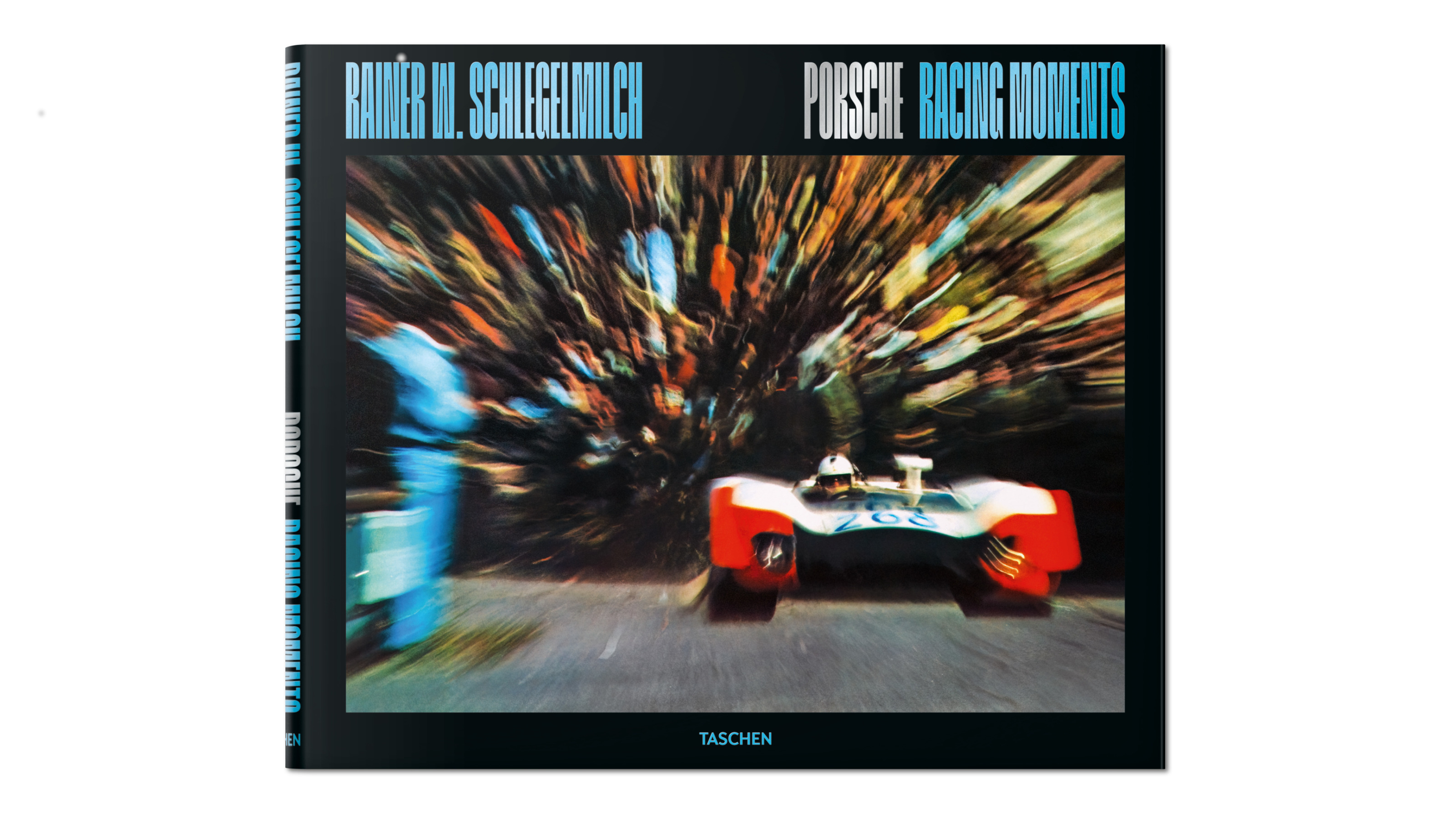 Rainer W. Schlegelmilch's Porsche photography showcases the aesthetics of speed
Rainer W. Schlegelmilch's Porsche photography showcases the aesthetics of speedTaschen's new edition of Rainer W. Schlegelmilch’s collected imagery from a quarter of a century spent following Porsche racing highlights historical machines, emotive camera technique and major moments on the track